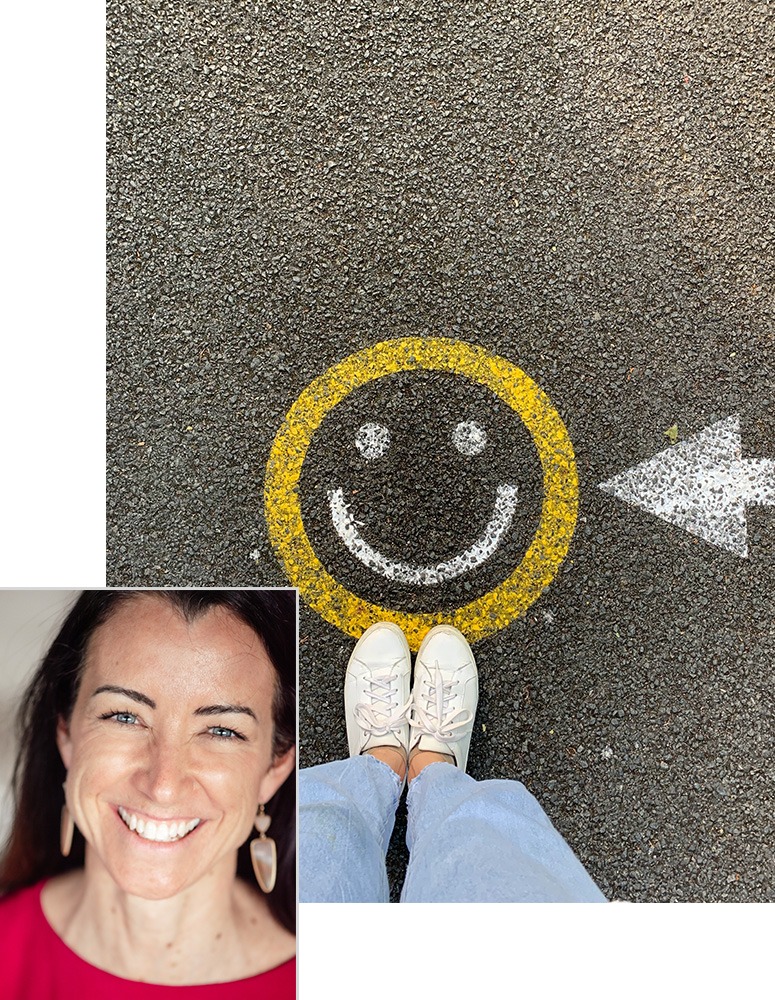How to Arrive at Happy
Tia Graham is the founder of Arrive At Happy, a Los Angeles-based company created to inspire transformation through happiness. A certified Chief Happiness Officer from Woohoo, Inc., Europe’s leading Happiness at Work organization, with certificates in Happiness Studies and Teaching Happiness from Harvard’s Tal Ben-Shahar and The Happiness Studies Academy, Tia partners with organizations and individuals to increase their daily happiness and, in turn, increase their success in all areas of their lives. She teaches that happiness leads to success and that we each have the power to take charge of the happiness that is our birthright.
I recently had the pleasure of being interviewed for Tia’s Arrive at Happy Leaders podcast, which explores the paths that other successful people have taken to create a foundation of happiness in their lives and how they’ve endeavored to create a culture of happiness in their workplaces.
Tia says that her own “natural state has always been upbeat and full of gratitude for the experiences and relationships that have helped shape and define her life.” However, she faced unexpected turbulence after the birth of her second daughter, when she found herself struggling to juggle motherhood, work, marriage, friends, and her sense of self. She’d always dreamed of creating a happiness company and being a catalyst for positivity in the world. When she saw her own happiness waning, she knew it was time to grab hold of her life in a new way and turn her entrepreneurial vision into a reality. The inner clarity that came from her time of struggle taught her that our most challenging experiences can lead us to breakthroughs to live life more expansively. This is what she passes on to others: the inspiration to reach their full potential, live life to the fullest and ‘arrive at happy’ – every day.
I told Tia that my father had modeled happiness and gratitude for me throughout my life. Although he wasn’t successful by society’s standards—he had to work as a messenger for minimum wage until he was long past retirement age; nevertheless, he always had a smile on his face and was willing to share whatever he had with others. Undoubtedly, his positive attitude also contributed to him living to be 100!
One of the lessons his example taught me is that happiness comes from being yourself. I tell people, “Don’t emulate; you have to allow the unique you to blossom.” We’re all born with unique talents and abilities; we have to trust ourselves enough to develop them. Who cares if they’re what the world tells us we need to do to be successful? There are many successful people who are miserable. Better to be yourself and be happy.
Tia and I also talked about the many contemporary forces working against our happiness. Cumulatively I call these forces “Cultural Stress,” the stress of modern living. Even before the pandemic, we were spending less time with friends and family members, more time on social media, isolated within our homes, calling out to have goods and services delivered. We feel as if we can never keep up with the pace of living, with the constant technological changes, and with the competition to be whatever the world says is “trending.”
The pandemic has created a whole new layer of stress in our lives. It has killed more than half-a-million of us in the United States alone and it has disrupted countless more of us economically and socially.
But I always remind myself and others that challenges also lead to opportunities. Look at the way scientists have come together to create several new vaccines in record time! Look at the new business models that have flourished. And the new skills people have acquired. Look at how the pandemic has revealed how much we really do need physical human interaction.
For her last question, Tia asked me how I fostered a culture of happiness at my skincare company, Murad. I told her that I spent at least an hour with each new employee in our Los Angeles office. Our meeting would culminate with us getting out paint and canvas and painting together—not to come up with a perfect representation of a tree or a dog or whatever, but just to throw paint and water around and have fun. There was no way to make a mistake or do it wrong.
I would tell employees that here at Murad we were committed to their success and that I hoped they would see their job as an opportunity to become more successful.
Listen to the full interview here:
